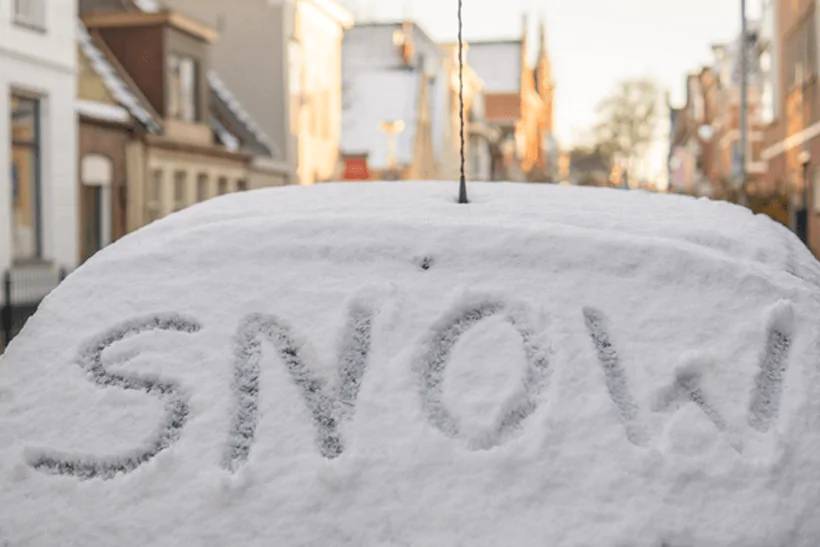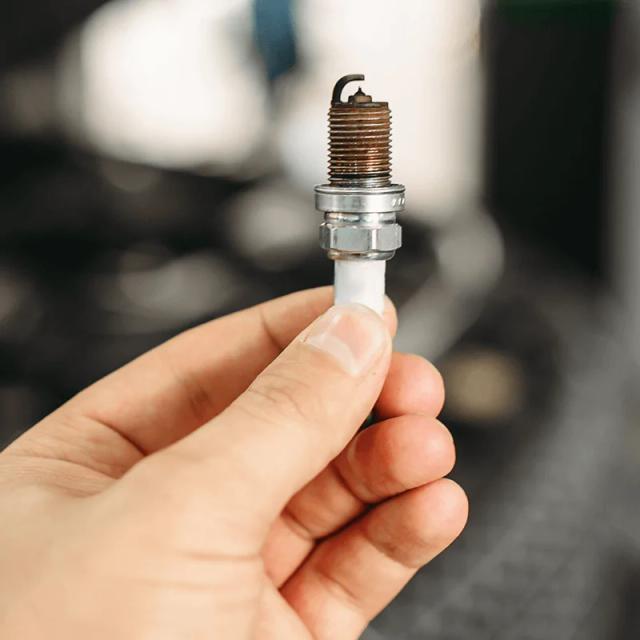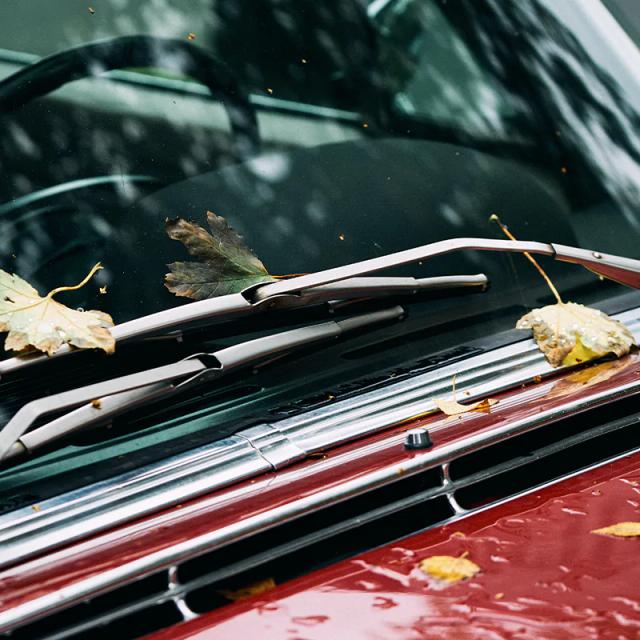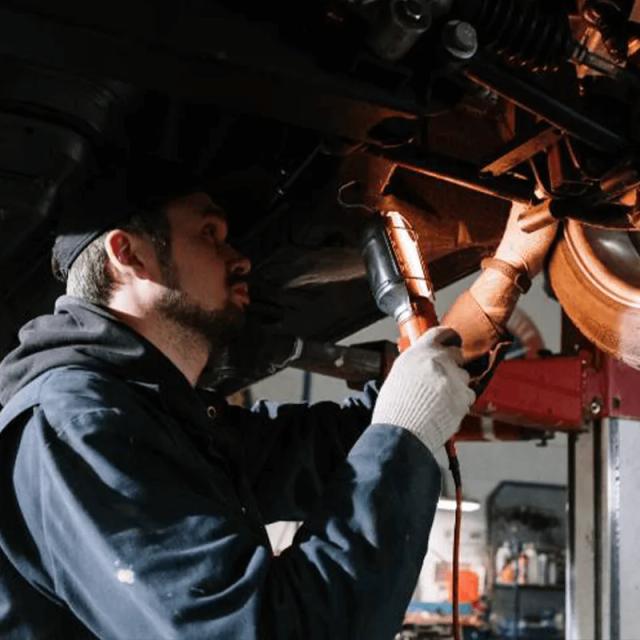
It’s easy to mix up coolant with antifreeze. With our guide, we’ll explain the differences between the two. Antifreeze is a chemical additive that lowers the freezing point and increases the fluid's boiling point in your car's coolant system. Coolant is a mixture of antifreeze and water.
This prevents the coolant from freezing in cold weather and helps to stop the engine from overheating. It's an essential product that every vehicle needs to run smoothly and safely.
If you need replacement antifreeze and coolant for your vehicle just head over to our antifreeze and coolant section, and we’ll show you what options are available.
What Does Antifreeze Do?
Is Antifreeze the Same as Coolant?
Where Do I Put the Coolant in My Car?
Can You Mix Pink and Blue Antifreeze?
Can You Put Too Much Antifreeze in a Car?
What Is the Correct Coolant and Antifreeze for My Car?
How to Top up Engine Coolant - 4 Simple Steps
How Often Should I Top up the Coolant?
Antifreeze and Coolant Know-How
What Does Antifreeze Do?
The fluid in your car's coolant system is water-based, which means it's at risk of freezing in sub-zero temperatures. Antifreeze contains a chemical that lowers the freezing temperature of the coolant fluid in your car, typically to around -37.5°C.
But antifreeze doesn't just protect your car in freezing weather: it also stops the coolant system from overheating. Your engine gets extremely hot, and the coolant system circulates coolant through the radiator to prevent the engine from overheating. Antifreeze increases the boiling point of the coolant to around 106°C, which stops it from boiling off and evaporating when things get very hot. This, in turn, allows the engine to maintain a safe operating temperature.
Many antifreeze products also contain additives and inhibitors that help to prevent corrosion inside the coolant system. This keeps it in good condition and helps prolong the engine's lifespan.
Is Antifreeze the Same as Coolant?
Many people mix up coolant with antifreeze. However, there is a simple difference. Coolant is a mixture of water and antifreeze. So, while engine coolant contains antifreeze, they're not the same thing, as coolant is antifreeze diluted with water. The exact concentration of antifreeze in the coolant will vary depending on the make and model of the car. Still, the recommended level in most vehicles is a 50/50 split of antifreeze and water.
Antifreeze is sold as an undiluted concentrate or as a premixed coolant fluid containing a 50/50 mixture of antifreeze and water. If you buy concentrated antifreeze, you'll need to mix it with water, while ready-mixed products can go straight into the coolant tank.
Where Do I Put the Coolant in My Car?
Coolant is added to the coolant reservoir, a plastic tank mounted in the engine bay on most vehicle makes and models. There should be a cap located on the top of the coolant tank where new coolant is added. Your car owner's handbook or Haynes manual can help you find the coolant reservoir in your vehicle.
When topping up the antifreeze, you should remember that you should never add undiluted antifreeze to the coolant tank straight from the bottle, as this could damage the cooling system and even cause the engine to overheat. Antifreeze should always be mixed with water according to the instructions on the packaging until it meets the coolant liquid concentration recommended by your car manufacturer.
Can You Mix Pink and Blue Antifreeze?
You should never mix pink and blue antifreeze or any two different kinds of antifreeze. The chemical formulations may be different, which could cause a reaction that would reduce the effectiveness of the antifreeze. In the worst-case scenario, it could even damage the cooling system. Using one single brand and type of antifreeze is the safest course of action.
If you can't find exactly the same type of antifreeze as you currently have in your car, we suggest draining and flushing the system before refilling it with a fresh coolant mixture.
You can learn how to perform a car radiator coolant flush with our 'Complete Guide on How to Flush a Car Radiator'.
Can You Put Too Much Antifreeze in a Car?
Yes, it is possible to put too much antifreeze in your car. Although you might think that a higher concentration of antifreeze would make the coolant less likely to freeze, it can actually have the opposite effect: pure ethylene glycol (the most common type of antifreeze) will freeze in temperatures lower than around -17.8°C. When mixed with water, the freezing point drops to around -37.5°C.
For optimum performance, you must use a mixture of antifreeze and water, known as coolant, in your car's coolant system – a 50:50 split is recommended for most makes and models. However, you can check the exact level in your owner's manual. You don't want the level of antifreeze to water in your coolant liquid to exceed the recommended concentration.
What Is the Correct Coolant and Antifreeze for My Car?
You can find an antifreeze suitable for your car by entering your registration or make and model on our antifreeze and coolant page or by consulting your owner's manual. Most modern vehicles require a silicate-free, organic acid technology (OAT) type of antifreeze. Cars manufactured before 1998 generally need a product that isn't OAT-based and contains silicate.
There are a few other things to consider when choosing the best type of antifreeze for your vehicle:
Concentrated Antifreeze vs Premixed Coolant
Antifreeze is usually sold as a concentrated solution, which must be mixed with water before use, or as a coolant solution containing 50% antifreeze and 50% water. Premixed products are more convenient if the concentration is suitable for your vehicle.
Ethylene Glycol vs Propylene Glycol
In most antifreeze products, the main chemical ingredient is ethylene glycol or propylene glycol. Propylene glycol is less toxic, making it safer and more environmentally friendly. However, ethylene glycol lowers the freezing point and increases the boiling point of coolant more dramatically, which makes it a better option for extremely cold or hot climates.
Extra Additives and Inhibitors
In addition to the chemical compounds mentioned above, some formulas include other additives and inhibitors that help stop the metal parts of your car coolant system from corroding. This can help to prolong the lifespan of your coolant system and engine.
How to Top up Engine Coolant - 4 Simple Steps
Products and Tools
To top up your car's coolant if your coolant level is low or old, you'll need the following products and tools:
Antifreeze: This should be the right type for your car and the climate conditions where you live. You can use either a concentrated antifreeze or a premixed coolant fluid at the right concentration for your vehicle.
Clean water (if using a concentrated antifreeze): Ideally, you should use water which has been boiled and left to cool to dilute concentrated antifreeze. This ensures no harmful bacteria enter your coolant system, helping prevent corrosion and increase the system's lifespan.
A mixing vessel (if using a concentrated antifreeze): This should preferably be a plastic fuel carton or tank with a large enough capacity to mix at least a few litres of coolant. Using a mixing vessel or tank with measurement indicators will also help you get the right concentration.
Funnel: This will make adding the coolant to the tank much more manageable.
Protective goggles and gloves: Most antifreeze products (particularly those containing ethylene glycol) are toxic, so you don't want to get them on your skin. You should wear full-length sleeves, protective goggles, and gloves to ensure no skin is exposed on your arms. If any antifreeze does come into contact with your skin, wash it thoroughly under a tap as soon as possible. If you accidentally swallow or get some in your eyes, seek medical attention immediately.
Cleaning cloths and towels: For wiping away spills and cleaning the cap.
Before you begin, remember that you should never attempt to top up the coolant when the car is still hot, as this could cause burns or scalds. Always wait until the engine has cooled down completely before attempting this process.
In some instances – where the coolant fluid is several years old, or you suspect that the system has been contaminated with dirt or another type of fluid – it may be better to drain the system and refill it with fresh coolant. Known as a ‘coolant flush’, You can learn how to do this in our 'Complete Guide on How to Flush a Car Radiator'.
If you suspect a coolant leak, you can also check our ‘How to Easily Spot and Repair a Car Radiator Leak’ guide on how to spot one and repair it.
Coolant Replacement Steps
Step 1
If you use a pre-mixed coolant solution, you can skip this step and go straight to step 2.
Put on your protective gloves and goggles. Then, if you are using a concentrated antifreeze, mix it with the water using your mixing vessel or empty tank. Be sure to follow the instructions on the packaging and in your car owner's manual.
Step 2
Open and secure the bonnet and cover the coolant reservoir cap with a clean cloth. Then, slowly unscrew the cap. Pressure might have built up inside the reservoir over time, so you'll want to work slowly and hold the cap down firmly to ensure it doesn't fly off. Once the cap is removed, put it to one side.
Step 3
Place the funnel into the coolant reservoir opening. Then, take the antifreeze and water mixture (or the premixed coolant, if this is what you're using) and pour it carefully into the reservoir until it reaches the desired level. You should never exceed the maximum markings on the side of the tank.
Step 4
Replace the cap and tighten it until secure. If any coolant has spilt around the tank, mop it up with a clean cloth. Lower the bonnet, and you're all done!
How Often Should I Top up the Coolant?
You can find out how often you should be topping up the antifreeze in your car by consulting your owner's handbook. Most manufacturers recommend this is done every 2–3 years or so, although these days, some vehicles come with "lifetime" blends of coolant that never need to be topped up. So, check what's suitable for your car before taking action.
It's sensible to top up your car with antifreeze at the start of the winter, where possible, to ensure that your car's coolant system won't freeze over when the mercury drops. Check out our ‘Winter Car Checks - How To Make Your Car Winter-Ready’ guide for more tips and advice on preparing your vehicle for colder weather.
If the coolant level is low, you may also need to top up your car with extra coolant. You can tell if the system is running low by seeing whether it falls between the minimum and maximum marks on the side of the coolant reservoir. If it's near the low or minimum mark, it's a sign that it's time to add some more coolant fluid. Always check this when the engine is cool, as this will ensure the reading is accurate. You may have a leak if you've noticed that the level keeps dropping despite repeated top-ups. Read our ‘How to Easily Spot and Repair a Car Radiator Leak’ to learn how to handle this.
Please note that the compounds in the antifreeze gradually degrade over time, which reduces the effectiveness of the coolant. How fast this degradation will take depends on all sorts of factors, and the only way to check the quality and effectiveness of the antifreeze inside your vehicle is by using a coolant hydrometer. However, assuming you stick to the recommended top-up intervals in your owner's manual, you can safely assume that the antifreeze provides effective protection.
Antifreeze and Coolant Know-How
Here at GSF Car Parts, we have a fantastic assortment of antifreeze to suit all car makes and models, including concentrated antifreeze and premixed coolant fluids. All of our antifreeze is sourced from trustworthy automotive brands, so you can count on keeping your cooling system running smoothly and helping to increase the lifespan of your car radiator and engine. We also have a cooling system cleaner that might interest you.
If you're interested in learning more about keeping your car in excellent condition, be sure to take a look at our auto knowledge hub, where you can find a wealth of expert advice on everything from changing a tyre to removing bodywork scratches at home.
Shop Antifreeze and Coolant at GSF Car Parts Online and In-Store
All our antifreeze and coolants are from trusted brands in the motoring industry, so you can count on them to be reliable and of excellent quality. Plus, our low-price promise means you can always expect great value, too.
We offer free UK delivery on all online orders over £25, plus 60-day returns*. We also know you want to get your car up and running as soon as possible, which is why we offer a Click and Collect service that allows you to get your new antifreeze and coolant in just an hour.
So, buy antifreeze and coolants from us with confidence today. Or if you're close to one of our 180 store locations across the UK & Ireland, drop by. Our experienced staff will be able to direct you to the correct part for your vehicle.





